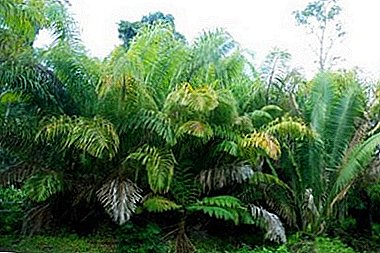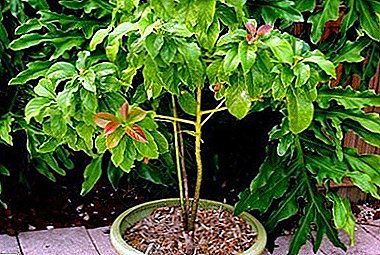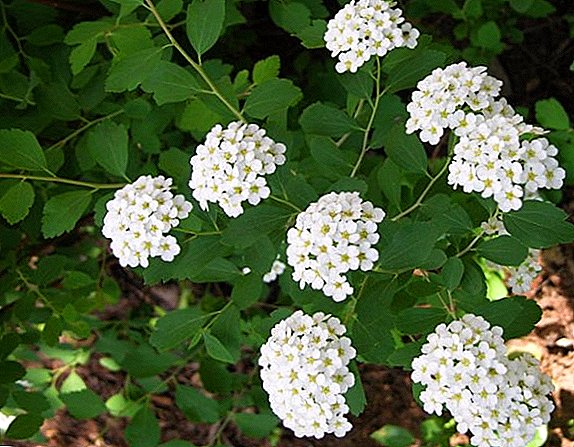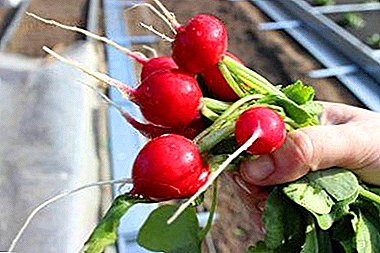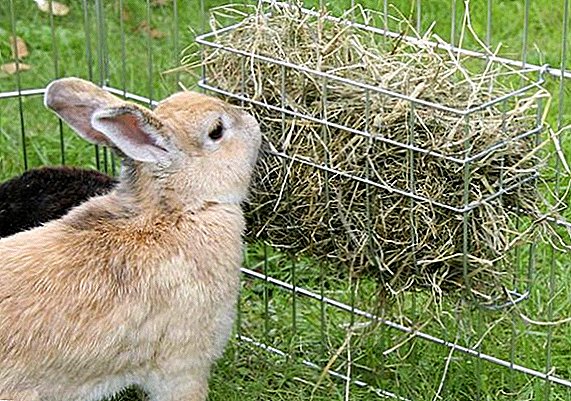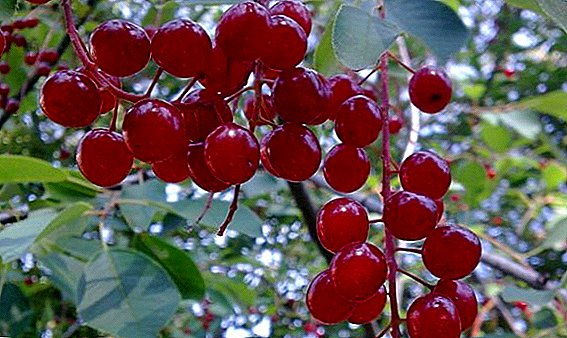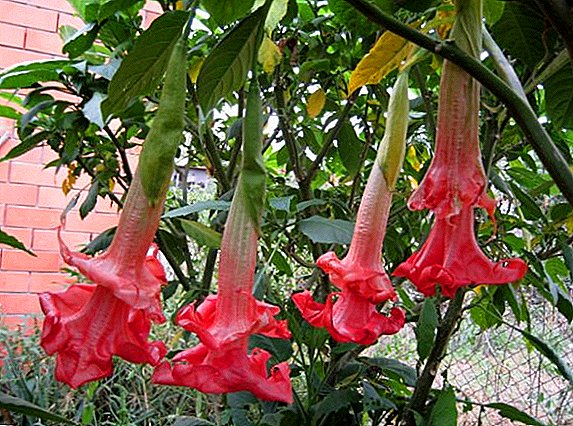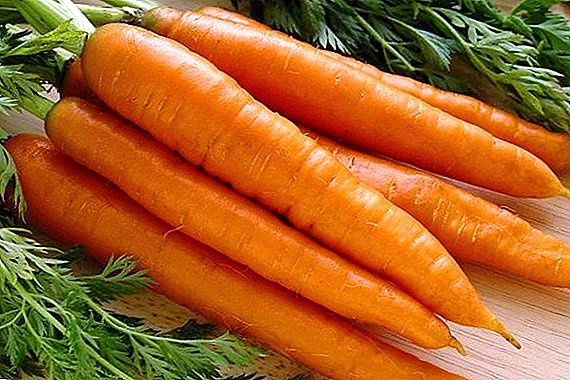
Carrots "Canada F1" is already available in many personal plots, because, as described, the variety combines excellent taste with yield and is ideal for the climate and soil conditions of the middle zone. And even gardeners with great experience will find this carrot a good addition to other plantings in their gardens.
Description and photo
Carrots "Canada" in the description of the variety is characterized as: "a mid-late-yielding hybrid of Dutch selection (" Shantane "×" Flaccus "), distinguished by good keeping quality. Suitable for cultivation on heavy clay soils in non-chernozem strip conditions."
Learn how to grow in your garden sorts of carrots "Samson", "Tushon", "Queen of Autumn", "Shantane 2461", "Vita Long".

Root "classical" shape, cylindrical, slightly conical with a rounded tip, reach a diameter of 5 cm, length up to 25 cm. The average fruit weight is 100-170 g, their maximum weight is up to 500 g.
The flesh of this carrot is a bright, rich orange color, a small center is almost the same, only slightly more saturated color. Covering the fruit is smooth, without tubercles, orange peel gives the fruit an attractive appearance. Mid-cut glossy dark green leaves form a semi-sprawling power outlet.
Characteristics of a variety
The time to achieve marketability from the first shoots is from 120 to 130 days, and even with a rather late planting it is able to overtake other popular varieties in growth.
The yield of carrots "Canada F1" ranges 4.5-7.5 kg per square meter m landings; this is much more than the common varieties Losinoostrovskaya, Nantes, Artek and the like. The variety is appreciated by amateurs for high resistance to leaf diseases, as well as juiciness and sweet taste.
Did you know? It is forbidden to sell vegetable jam in the EU. To continue the release of carrot jam, in 2001 the European Union passed a law declaring carrots fruit.
Advantages and disadvantages
The advantages and disadvantages of carrots "Canada" include the following characteristics.
Advantages:
- pickiness in relation to the soil;
- excellent taste;
- good keeping quality during prolonged storage;
- very high yield;
- large volumes can be removed in a mechanized way;
- high concentration of beta-carotene (about 21 mg of carotene per 100 g).
Disadvantages:
- does not tolerate soil moisture;
- sprouts quite a long time;
- affected by carrot fly;
- due to the fact that it is a hybrid, the seed for sowing will have to buy every year.

Did you know? Orange carrots became only in the XVII century. Before that, she was white, yellow, or even violet.
Landing features
Seeds of carrots sprout slowly, therefore, they need to be sown quite early. No need to repack crops, optimum planting density - about a hundred seeds per 1 square. m
Lighting and location
Hybrid "Canada F1" resistant to low light, it can be planted in fairly shaded places. A good result is noticeable when planting carrots on areas previously occupied by onions, tomatoes or potatoes.
Soil type
It is possible to grow up "Canada" on the most various soil, but it grows best of all on light loams and on sandy soils of weak acidity. With this variety, a good harvest can be obtained on heavy black soil and even on clay, where other varieties will not grow. However, on light soils, yield is better and carrots grow larger.
It is necessary to dig up the earth in advance, especially carefully, if the ground is heavy, and fertilize with mineral mixture.

Optimal timing
Best results are obtained when sowing "Canada" in the last decade of April or in the first days of May.
Seed technology
It would seem, what is easier - to sow carrots. But this process has its own characteristics, which need to consider:
- the ground is well moistened; a shallow groove is made in it by a board or a hoe;
- seeds are buried to a depth of about 1.5-2 cm;
- beds after sowing should be well mixed with peat chips.
Before the appearance of sprouts, the sowed areas are covered with agrofibre or polymer film. Sowing carrots for winter is carried out in the second half of October or early November, when the air temperature drops below 5 ° C.
Preparation of planting material
The germination of varietal seeds is high, but if you sow them dry, they will hatch only after 2-3 weeks. This is due to the fact that in the seeds of umbrella plants there is a large amount of essential oil, and it does not allow water to get to the developing embryo. Therefore, before sowing carrot seeds, they need to be washed with clean warm water, and then soaked for further swelling.
It is best to soak the seeds with a stimulating germination solution, which prepared by dissolving in a liter of warm water:
- one teaspoon of stimulator "Effecton";
- or one teaspoon of sodium humate;
- or one tablespoon of sifted wood ash.

In this solution is placed the seeds, laid in a bag of loose tissue. After 24 hours they are removed, washed with water and, wrapped in a damp cloth, placed for three days in the compartment on the door of the refrigerator - for hardening. When starting sowing, the sack is taken from the cold and the seeds are dried slightly so that they acquire flowability.
Sowing scheme
In a row, the seeds should be at a distance of 0.5 cm from each other, and between the grooves leave about 20 cm between rows.
Grade Care
After 10-14 days after germination spend first thinning, when breaking through between individual shoots, a distance of about 2 cm is left. A second time the plants are thinned out at the formation of rosettes of 4-5 leaves, leaving a gap of 4-6 cm between them. Frequent weeding, moderate watering and loosening of the ground between the rows are necessary.
Important! Organic matter, in particular manure, for feeding carrots can not be used in any case, use only mineral dressing.If you sow carrots for more than 2 years in a row in one place, plantings can be affected by pests, especially carrots. In this case, it is necessary to carry out the treatment with "Karate", "Arrivo" or other insecticides. In addition, you can place a plot with onions (batun, leek) next to a carrot bed or plant mint - these plants scare a carrot fly.

Harvesting and storage
Collect carrots should only be fine dry day - otherwise it will not be stored. Before that, in the middle of summer, during the second thinning, individual mature fruits are selected, and mass harvesting is started in August or September.
To keep the harvest for a long time, you should observe the following rules:
- storage place should be dark, cold (0-3 ° С), with air humidity not more than 95%;
- no need to wash carrots before storing;
- broken, uneven form, damaged carrots need to be rejected;
- no more than 5-6 kg of fruits are placed in each container and sprinkled with wet sand, or carrots are put in stacks, sprinkled with sand.
Important! It is impossible to pour carrots with dry sand.When these conditions are met, carrots are easily stored for 9-10 months with preservation of all taste and food qualities.

Try to grow this variety - it will justify and even exceed your expectations. "Canada F1" brings a bountiful harvest, which can be used for various purposes: it is suitable both raw and for different conservation, it is recycled. Sweet and very juicy fruit pulp is suitable for squeezing juice, freezing and preparing baby puree.


